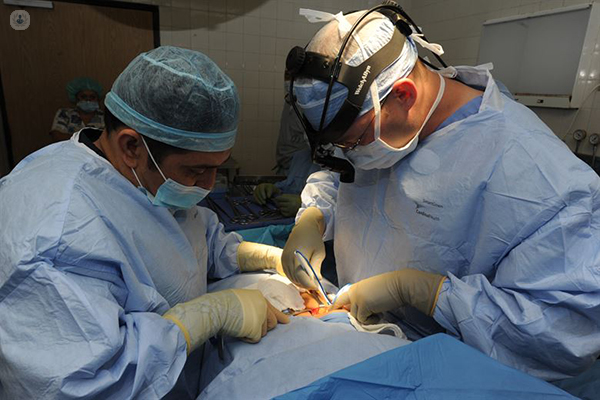

What is a cystectomy?
Cystectomy is the surgical removal of all or part of the bladder. Cystectomies can be divided into two types, depending on the reason for the excision and the amount of tissue removed:
- Radical cystectomy – the whole bladder is removed along with the some of the surrounding tissue and lymph nodes. In men, this can include the prostate and seminal vesicles, while in women, it could include a portion of the reproductive system.
- Partial cystectomy – only part of the bladder is removed. If cancer is present in the muscular layer of the bladder wall, but is not very large and only in one place, the tumour can sometimes be removed by only removing that part of the bladder wall, without removing the entire bladder. The hole in the bladder wall is then closed. The advantage of this surgery is that the person keeps the bladder intact and does not require reconstructive surgery. However, it is possible that the bladder will not be able store as much urine and that the person has to go to the bathroom more frequently. In addition, bladder cancer can arise in another part of the bladder wall.
For any type of radical cystectomy, general anaesthesia will be used so that the patient will be totally asleep.
Why is it done?
Cystectomy is performed, in most cases, to remove bladder cancer, although it may occasionally be used to treat other serious bladder conditions.
What does a cystectomy consist of?
A cystectomy can be carried out as an open procedure or using minimally invasive techniques. First, the bladder or section of bladder is removed. In radical cystectomies, the urinary tract must then be reconstructed to allow the patient to continue passing urine out of their bodies. There are two options:
- Bladder reconstruction (neobladder) – a segment of the patient’s intestine is taken and used to create a storage pouch for urine that will function as a new bladder. The surgeon attaches it to the ureters at the top, connecting it to the kidneys, and the urethra at the bottom to allow the urine to pass out of the body. This is only an option if these tubes do not need to be removed as well.
- Ileal conduit – if the urethra has been removed, the surgeon uses intestinal tissue to create a tube that attaches directly to the ureters and leads to a stoma (a hole made in the patient’s side), where urine can pass into a bag. This must be emptied regularly.
Preparation for cystectomy
The patient is admitted to hospital the day before or the morning of the operation. The doctors and nurses will advise on what to eat and drink, with nothing to be drunk in the two hours prior to the surgery.
Care after the intervention
The patient will usually remain in the hospital for between five and ten days after the operation, in which time they will be monitored and given medication for the pain and to prevent blood clots. To the latter end, it is important to stay active, with nurses or a physiotherapist helping the patient to walk around during the day. After the operation, the patient may eat and drink, as this is crucial to aid the healing process (although they should follow their doctor’s advice on what to eat).
If the patient has a neobladder, they will have to undergo bladder training, as their new “bladder” has to learn to control the flow of urine. The patient will have to return to the hospital after discharge to continue this training.
If the patient has a stoma, they will be instructed on how to manage and clean it.

